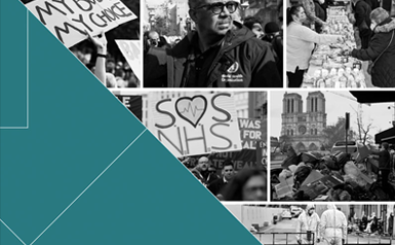Countless research studies have shown the benefits of employee recognition.
Every measure of morale, productivity, performance, customer satisfaction, and employee retention, goes up when managers regularly provide recognition.
A 2023 Gallup Poll showed that “employees who strongly agree that recognition is an important part of their organisation’s culture are 3.7 times as likely to be engaged and about half as likely to experience frequent burnout than those who do not.”
Giving recognition in the form of public praise to individuals who are doing a great job should be an easy thing for all of us to do. But how often do we stop to think about how and when the way we give public praise might differ based on someone’s racial background.
Do you praise people from some ethnic groups more or less than other ethnic groups and does your praise differ between public and private settings? Beyond the action of giving praise, what about the content of what you say and whether you call out different things to different people?
A recent article by Laura Morgan Roberts highlights the fact that people in the Asian or African Diaspora often experience a praise deficit which begins at school and continues into the workplace. Research conducted in 2022 by Gallup in the US, showed that Black and Hispanic employees are considerably less likely to perceive their recognition experience as equitable than White employees.
So, is it as simple as ensuring you are being equal with the amount of people and praise you give regardless of ethnic background? Unfortunately for anyone looking for a quick fix, human needs are more complex than just feeling good about the number of times your manager said something good about your work.
The power of recognition lies in not only in its equity but in its personalisation and authenticity. The same 2022 Gallup study showed that “Three-quarters of Black and Hispanic employees do not strongly agree that the recognition they receive is authentic. By comparison, White employees are 10 percentage points more likely to feel the recognition they receive is authentic.” However, when done well the results are impressive. In the study, Black employees were 79% more likely to thrive and Hispanic employees were 69% more likely to thrive when they were in strong agreement that the recognition they received was authentic.
Personalisation is another key component of effective recognition. Knowing who the person in front of you is, whether this is their background, family situation and the things that motivate them, is a critical part of being able to provide effective praise and recognition. It also helps to build bonds of trust which can make future praise and recognition much more meaningful to the individual.
So, are there any differences that we need to be aware of when it comes to what we say in our praise? We know from studies looking at the type of language used in sports commentary that, the way an individual’s qualities are called out differ according to their ethnicity. A 2020 analysis of football commentary from four of Europe’s top leagues showed that players with lighter skin tones were more likely to receive praise for intelligence, versatility work rate and quality compared to players with darker skin tones. Those players with darker skin tones were more likely to receive criticism in all these areas despite playing for high performing teams.
Numerous studies on performance feedback in the workplace have also shown stark differences in the type of content seen in reviews based on gender and ethnicity. For example, in one US law firm, nearly half of people in the African or Asian diaspora had at least one mistake mentioned in their performance review compared to a quarter of white men. People from the African or Asian diaspora were also far more likely to have their personality referenced as a basis for decision making in their evaluations (good and bad) than white men and 50% of black women’s evaluations included reference to the behind the scenes/housekeeping work that existing at every company vs just 3% of white men.
As a manager who believes in the power of recognition, treading the tightrope of when, what and who to give praise to, can feel tricky. Because of this, I find that as a leader of a big team myself, I repeatedly refer back to the principles that all good recognition should be:
Objective and authentic – what are you praising the person for, and would you say the same thing to another member of your team if they performed equally well?
Personal – what was the specific thing that they did that means they deserve the praise – acknowledge that you really noticed the specific action and outcome rather than offering vague and generic praise.
Given at the right time and in the right place – not everyone enjoys receiving public praise, especially in situations where someone’s diversity can make them hyper-visible and scrutinised.
Whilst giving praise can feel easy, taking a step back and being thoughtful about what you say, to whom and when can make a meaningful difference to each individual's experience of their workplace and their engagement.
This year’s Race Equality Week features a helpful guide to thinking about how you give praise in a thoughtful and meaningful way and is a great starting point for every one of us to think differently about giving praise to people we work with.
As part of Edelman’s participation in Race Equality Week 2024, Eleanor Read talks about why employee recognition can be a powerful tool for good but one that requires us to be thoughtful about using.




